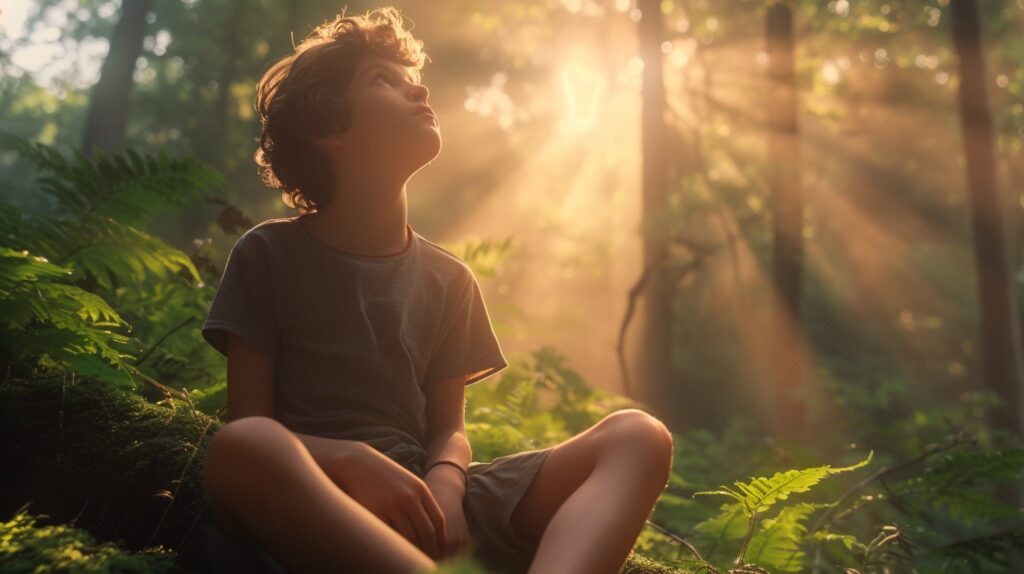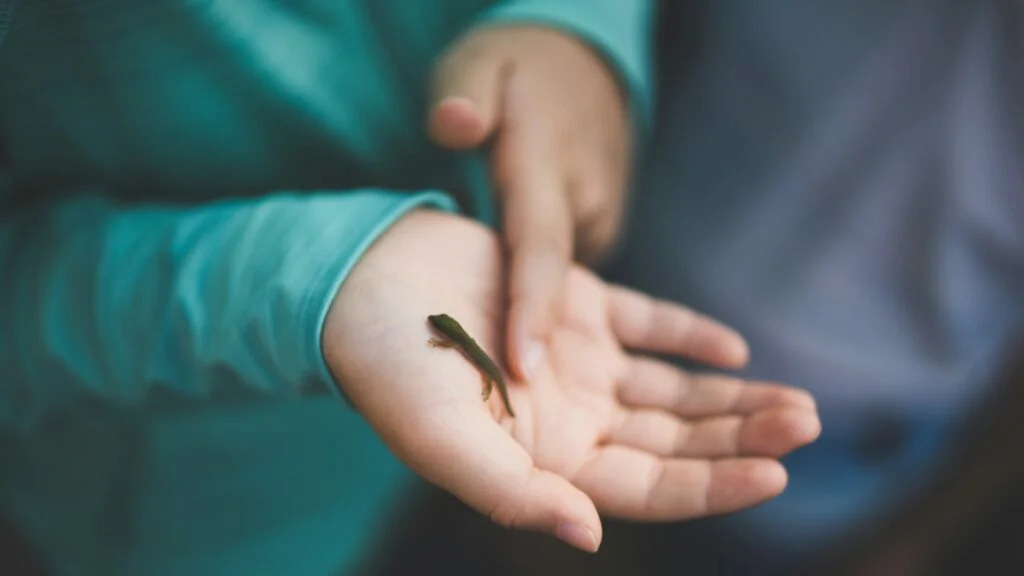Science
The Alps are Losing Their Glaciers: They Could Disappear Within Decades
06 January 2026

Talks with animal friends, animated furniture, and moving plants. These are more than just worn-out fairy tale conventions; they represent the reality of a child’s world. The youngest among us do not recognize rigid boundaries between what is human and nature. They freely transition from one realm to the other. Is this closeness to nature something we lose as we enter adulthood? What do children see that we, as adults, no longer perceive?
Most parents can attest to children’s interest in nature. This observation extends beyond subjective familial experiences, finding support in scientific research (psychological experiments) and cultural phenomena.
According to the modern paradigm, the “naive” need for communion with nature should, with maturation, give way to human-centric thoughts and actions. This would mark a transition from a world of fantasy and talking animals to one of rationalism and reason-dictated order. The extreme consequences of disrupting this process are exemplified by “feral children.”
The term “feral children” refers to human children raised by animals, who spent their early years in isolation, with limited or no contact with other humans. Mowgli from The Jungle Book, Tarzan raised by apes, and Romulus and Remus – the legendary founders of Rome nurtured by a wolf – are all examples of feral children. Culture abounds with such imaginings, and even more actual cases exist. One of the most famous stories concerns Victor of Aveyron.
In 1800, a solitary boy was discovered in the dense forests surrounding the French town of Saint Sernin. At the time of his capture, Victor – as he was later named – was about twelve years old, naked, subsisting on plants he foraged, and communicating through inarticulate sounds. The boy had spent at least seven years of his childhood in isolation.
Year after year, successive physicians and researchers attempted to reintegrate Victor into society. Their mission of “humanization” encompassed both linguistic and behavioral education. Ultimately, after years of instruction, Victor mastered a few words and simple phrases and gained more confidence around people, but his development stagnated. He remained childlike for the rest of his adult life.
We recommend: The Daily Reality of Illness: The Human Psyche in the Face of a Severe Trial

According to Beata Borowska-Beszta’s findings, feral children exhibit “provoked psychosomatic differences that align with various forms of human psychosomatic divergence (disability).” The Polish researcher notes that the process of “going wild” is not necessarily linked to nature and can occur in domestic settings. It stems from multiple coexisting adverse environmental conditions that impact a young person’s development.
Feral children often bear witness to systemic neglect, abuse, or abandonment by their closest relatives. They also grapple with mental illnesses, a condition now attributed to Victor of Aveyron as well. The intensification of the feral child phenomenon in modernity, particularly in the 19th century, is no coincidence.
This period solidified the belief in the separation of humans and their cultural and civilizational products from the natural world. Development in line with accepted norms was thought to be ensured by rational cognition and language, seen as the fundamental element distinguishing us from animals. From this perspective, every child – not just Victor – would need to be cleansed of the “taint of wildness” to become a true, not merely young, human upon reaching maturity. Entering adulthood would be synonymous with civilization, abandoning the world of fantasy and nature. Only then would young – and thus potential – humans become fully human.
If we treat feral children as a metaphor for childhood, it becomes apparent that the bond connecting the youngest with nature is not an aberration. Rather, it is the attunement to an anthropocentric norm that is secondary and impoverishes the experience of the “self” and the external world.
Psychological, cognitive, and cultural studies confirm this. For children, agency – the ability to act and influence one’s surroundings – is not something attributed solely to humans; animals, plants, and even objects exhibit it, too.
“In the case of children, this is a subjectivity seeking contact […]; a non-dominant, sincere subjectivity, in which the hierarchical model from the adult world has not yet taken hold and which, in this childish period, spontaneously perceives subjective values in nature,” writes Anna Barcz in her book Ecorealism.
The belief in the autonomy of non-humans, as well as thinking of oneself as someone who is among – rather than in opposition to – nature, is, according to Gene Myers, a psychologist from Western Washington University, natural for a child. The desire to interact with animals, for instance, often trumps other potential pleasures for the youngest, as studies show.
In one experiment, Myers asked preschool children to choose one of several activities. The little ones could draw, and play with dolls, stuffed animals, or toy cars. They could also feed the preschool’s guinea pig, although – it is worth noting – they had done this many times with their caregivers, so it was not novel. Nearly two-thirds of the children chose to interact with the animal, despite the many other available options.
We recommend: The Enduring Ideal of “Good Wives, Wise Mothers” in China, Japan and Korea

Victor of Aveyron’s subsequent inability to function in a society largely stemmed from his communicative backwardness. According to American linguist Grover Hudson’s definition, ferality manifests primarily in the linguistic sphere, which fails to develop normally and typically cannot achieve standard developmental levels.
However, if we treat childhood wildness symbolically, language becomes the element uniquely binding the world of children with the natural world. Animals allow children authenticity and sincerity in communication. This works both ways – children accept animals as they are.
“Animals do not demand sophisticated conformity to the structures of verbal communication, leaving children free to experience meanings and relatedness at nonverbal levels. Nor do they require accountability or draw children into the complex worlds of linguistically constituted objects, roles, morally laden evaluations, deceptions, and paradoxes,” observes Gene Myers.
Our perception of the world is reflected in language, and by opening our thinking and communication to children and the natural environment, we can discern what we lost sight of during maturation – the “wild” element.
“Indeed, until children learn the conventions of language figures and lexicalized metaphors, they are like fish – not so much voiceless as lacking listeners, as the sounds they make do not fit into the anthroponormative category of speech,” asserts literary scholar Anita Jarzyna.
The Polish proverb she refers to claims that children and fish have no voice, Yet, it seems that they speak, expressing their fears and desires. It falls to adults to hear them anew.
Translation: Klaudia Tarasiewicz
Polish version: Dzikie dzieci: wychowane przez zwierzęta albo w izolacji